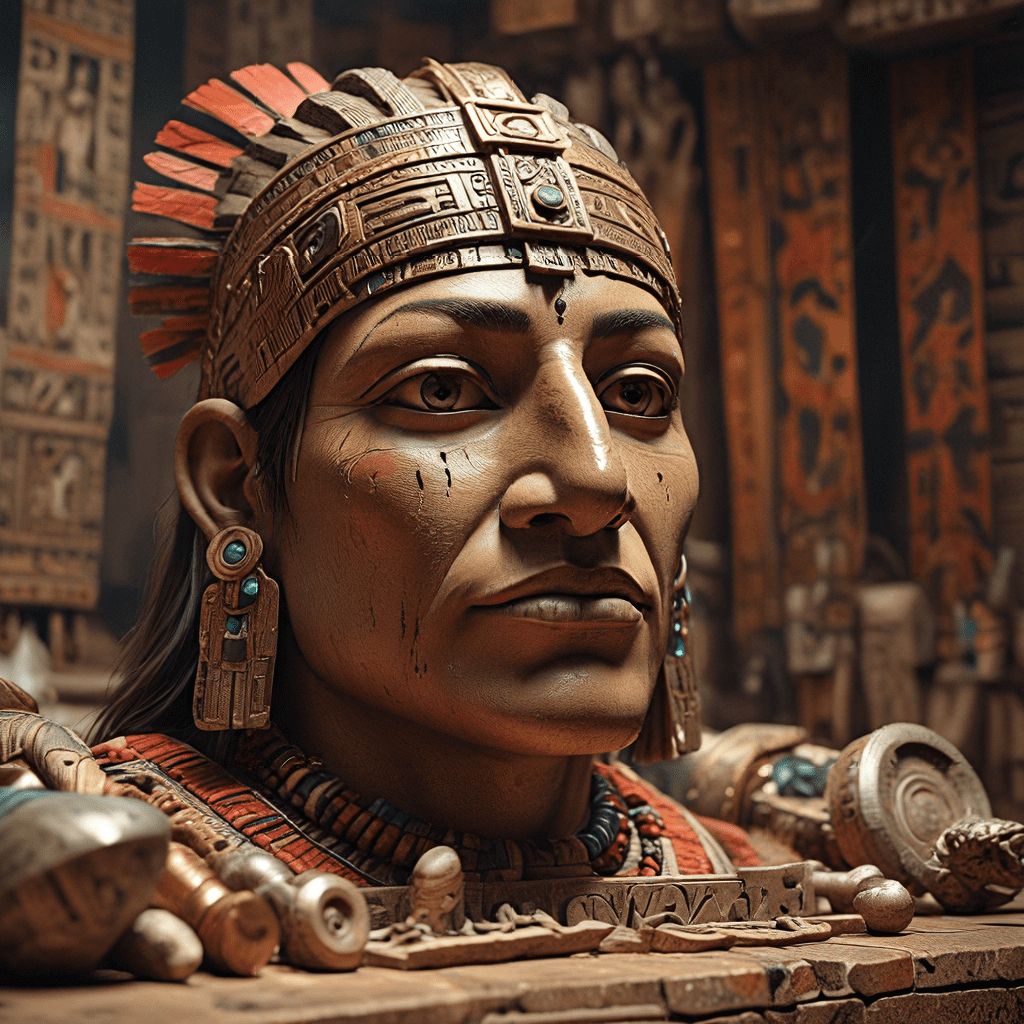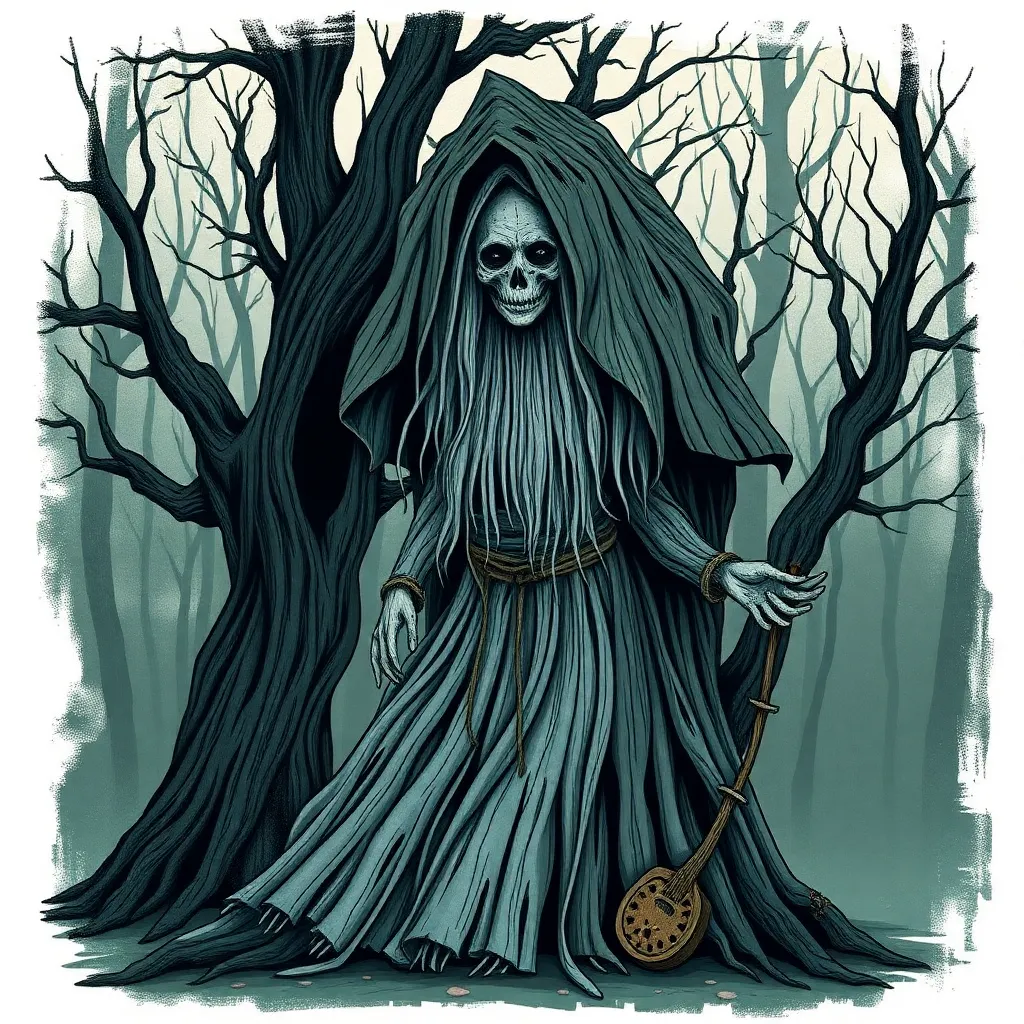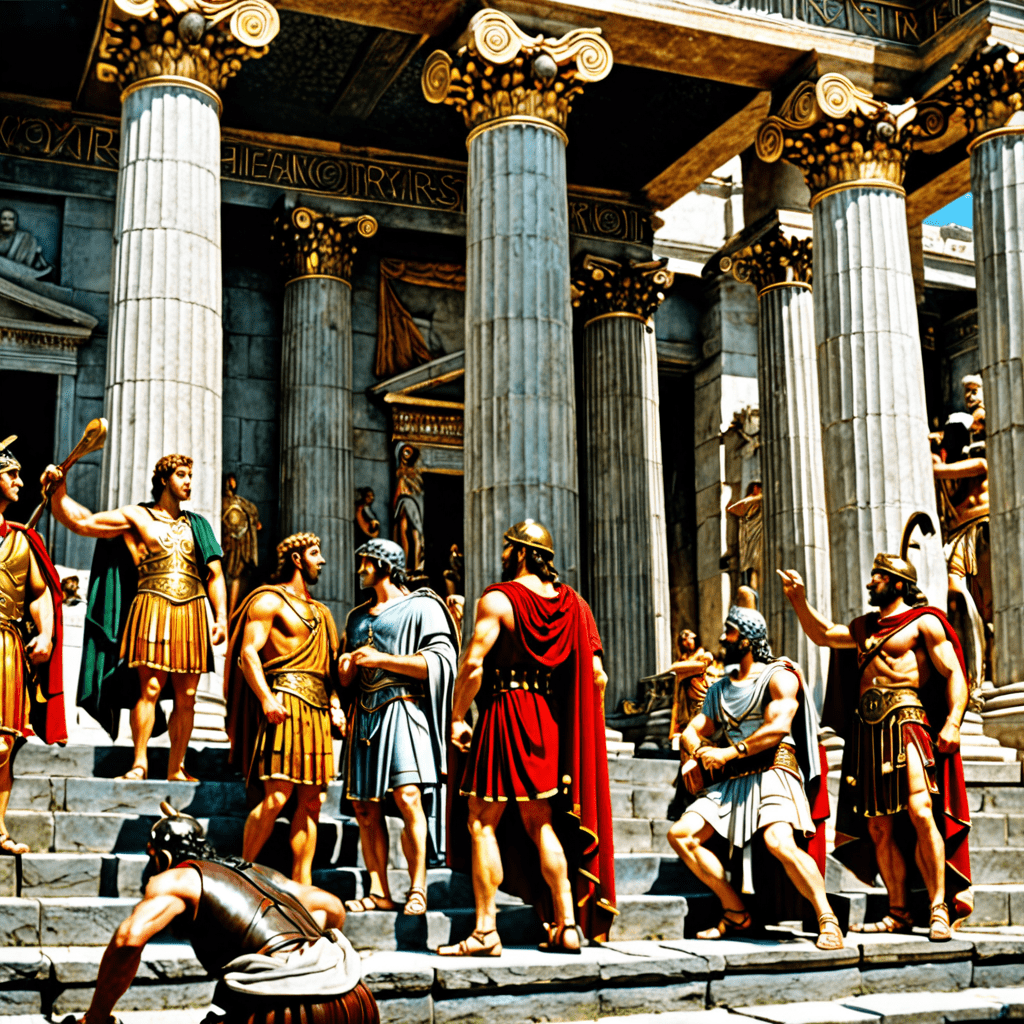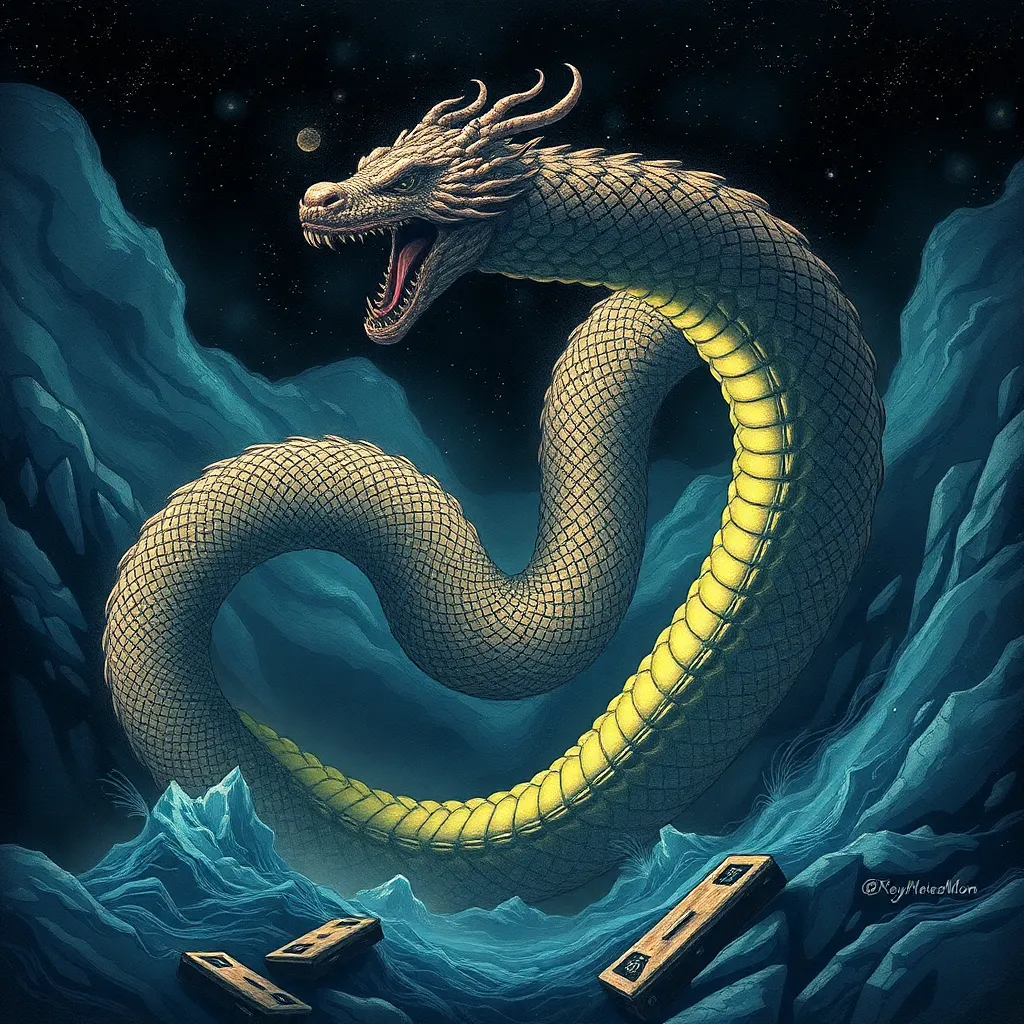Incan Mythical Artifacts: Objects of Power and Mystery
The Incan civilization, which flourished in the Andes Mountains of South America from the 13th to 16th centuries, left behind a rich tapestry of myths, legends, and artifacts that continue to fascinate and inspire us today. The Inca believed that their world was infused with spiritual power, and their artifacts served as tangible expressions of this divine energy. These objects were not merely decorative or functional, but were imbued with deep meaning and symbolism, used in religious ceremonies, rituals, and daily life.
The Incan Worldview and the Role of Artifacts
The Incan worldview was deeply intertwined with nature, and they believed that the universe was governed by powerful deities who manifested in various forms. The sun, moon, stars, mountains, and animals were all seen as sources of spiritual power. The Inca revered the sun god Inti, who they believed to be the source of all life and energy, and they created numerous objects to honor and communicate with him.
Artifacts played a crucial role in Incan society. They were used to connect with the divine, to communicate with ancestors, to maintain order in the cosmos, and to ensure the well-being of their people. They were also used as symbols of power and authority, and were displayed in temples and palaces to impress visitors and reinforce the legitimacy of the Inca rulers.
The Origins of Incan Mythology: Creation Myths and Divine Objects
Incan mythology is rooted in creation myths and stories that explain the origins of the universe, the earth, and humankind. The most famous creation myth tells the story of Viracocha, the creator god, who emerged from Lake Titicaca and brought order to the world, creating the sun, moon, stars, and the first humans.
Viracocha is often depicted as a powerful figure with a staff or scepter, representing his divine authority. Other important deities include Inti, the sun god, Mama Killa, the moon goddess, and Pacha Mama, the earth goddess. The Incan pantheon included a vast array of spirits and deities, and each was associated with specific objects, rituals, and practices.
The Intihuatana: The Sun Stone and its Symbolic Power
The Intihuatana, also known as the "Hitching Post of the Sun," is a significant Incan artifact that embodies the deep connection between the Inca and the sun. Found in various locations across the Incan empire, including Machu Picchu, the Intihuatana is a stone structure that resembles a sundial or an altar.
The Intihuatana was used for astronomical observations and religious rituals. It was believed to have the power to control the sun's movement, and it was a sacred site where Inca priests performed ceremonies to ensure a bountiful harvest and the well-being of the empire. The Intihuatana is a powerful symbol of the Incan worldview, showcasing their deep understanding of astronomy and their reverence for the sun god Inti.
The Golden Disk of Viracocha: The Creator God and the Power of the Sun
The Golden Disk of Viracocha is a legendary artifact, believed to be a sacred object used by the Incan priests to communicate with Viracocha, the creator god. It is described as a large, circular disc made of pure gold, adorned with intricate designs and symbols representing Viracocha’s power.
According to legend, the disk had the ability to channel the energy of the sun, granting the Incas supernatural powers and wisdom. It was said to be kept in a secret chamber within the Temple of the Sun in Cuzco, the Incan capital. The Golden Disk of Viracocha disappeared after the Spanish conquest of the Inca Empire, and its whereabouts remain unknown. Its existence continues to fuel speculation and intrigue, offering a glimpse into the mystical world of the Incan civilization.
The Chakana: The Cross of the Andes and its Connection to the Cosmos
The Chakana, also known as the "Cross of the Andes," is a powerful symbol in Incan mythology. It is a geometric design consisting of three overlapping squares, forming a cross with four arms. The Chakana represented the connection between the three realms of existence: the upper world (Hanan Pacha), the middle world (Kay Pacha), and the lower world (Ukhu Pacha).
The upper world represented the heavens, home to the sun god Inti and other deities. The middle world was the realm of humans and the physical world. The lower world was the realm of the dead, spirits, and ancestral energies. The Chakana is believed to have been used in various religious ceremonies, including those related to agriculture, healing, and ancestor veneration. It symbolized the cyclical nature of life and the interconnectedness of all things.
The Chakana was also associated with the Milky Way, which the Inca saw as a celestial river flowing across the sky. It connected the different realms and represented the journey of the soul after death. The Chakana is still a significant symbol in Andean cultures, representing their rich heritage, spirituality, and connection to the natural world.
The Quipu: Knotted Strings of Knowledge and Power
The Quipu, a system of knotted strings, was a unique and complex form of record keeping used by the Incan civilization. These knotted strings, made from different materials and colors, could record information in a complex system of knots and their positions. The quipu served as a form of writing, recording information about population, taxes, trade, and even astronomical events.
The quipu was a powerful tool for the Inca, allowing them to maintain order and manage their vast empire. The ability to read and interpret quipus was a valuable skill, passed down through generations within the Incan elite.
Although the exact methods of using the quipu have been lost over time, scholars believe that the knots represented numbers and that their placement on the string indicated specific information. The quipu demonstrates the Incan's advanced understanding of mathematics, record-keeping, and communication. It also offers valuable insights into their complex social structures and administrative systems.
The Hidden Treasures of the Inca: Legends of Lost Artifacts
The Spanish conquest of the Inca Empire in the 16th century led to widespread destruction and the loss of many valuable artifacts. However, many legends and stories persist about hidden treasures, lost cities, and powerful objects that remain undiscovered to this day.
One of the most famous legends is about the "Treasure of El Dorado," a mythical city of gold supposedly located in the Amazon rainforest. Although no definitive evidence exists for El Dorado, the legend continues to fascinate explorers and treasure hunters. It serves as a reminder of the vast wealth and power that existed within the Incan civilization.
Other legends speak of hidden temples, secret chambers, and lost artifacts containing sacred knowledge and power. These legends often describe objects with mystical properties, such as the Golden Disk of Viracocha or the Intihuatana, which were said to possess supernatural abilities.
The allure of these lost treasures fuels ongoing research and exploration, fueling curiosity about the mysteries and secrets of the Incan civilization.
Theories on the Authenticity and Origins of Incan Artifacts
Despite the wealth of existing artifacts and legends, the origins and authenticity of some Incan objects remain debated. Some scholars believe that certain artifacts might be misattributed or have been created later for other purposes.
For instance, the authenticity of the Golden Disk of Viracocha is questioned due to the lack of physical evidence and the fact that it is primarily known through oral traditions. Some scholars believe it might be a creation of later generations or a fictional object created for entertainment purposes.
The origins of the Chakana are also debated, with some researchers believing that it might predate the Inca civilization or have been influenced by other cultures. However, the Chakana remains a significant symbol in Andean cultures, regardless of its exact origins.
It is important to approach the study of Incan artifacts with a critical eye, recognizing that some legends and stories might be based on speculation or embellishment.
The Influence of Incan Mythology on Modern Culture
Incan mythology has had a profound influence on modern culture, inspiring writers, artists, and filmmakers. The stories of Incan deities, legends, and lost treasures have captured imaginations around the world.
The Incan civilization's sophisticated understanding of astronomy, their architectural achievements, and their complex social structures continue to inspire awe and wonder. Their unique worldview, focused on harmony with nature and the interconnectedness of all things, offers valuable insights into the relationship between humans and the natural world.
The Incan influence can be seen in various forms of art, literature, and film, ranging from the popular novel "The Alchemist" by Paulo Coelho, which features the themes of personal journeys and spiritual awakening inspired by Incan mythology, to the blockbuster film "The Mummy," which draws from Incan themes of ancient civilizations, supernatural beings, and lost treasures.
Incan mythology continues to inspire and fascinate modern audiences, reminding us of the rich tapestry of human creativity and the enduring power of stories.
FAQ
Q: What are some famous Incan artifacts?
A: Some of the most famous Incan artifacts include the Intihuatana, the Golden Disk of Viracocha, the Chakana, and the quipu.
Q: Where can I see Incan artifacts?
A: You can see Incan artifacts in museums around the world, including the Museo Nacional de Arqueología, Antropología e Historia del Perú in Lima, Peru, and the American Museum of Natural History in New York City.
Q: What is the significance of Incan myths and legends?
A: Incan myths and legends offer valuable insights into the Incan worldview, their beliefs, and their relationship with the natural world. They also provide fascinating stories about their history, culture, and spirituality.
Q: What happened to the Inca Empire?
A: The Inca Empire was conquered by the Spanish in the 16th century. The Spanish conquest led to the destruction of many Incan artifacts and the loss of valuable knowledge.
Q: What are some of the most intriguing legends about Incan treasures?
A: The most intriguing legends about Incan treasures include the "Treasure of El Dorado" and the stories of hidden temples and lost cities, such as the City of the Sun.
Q: Are there still undiscovered Incan artifacts?
A: Although many Incan artifacts have been discovered, there is a possibility that more undiscovered treasures remain hidden in the Andes Mountains and throughout the Incan empire.
Q: Is Incan mythology still relevant today?
A: Incan mythology continues to be relevant today because it offers insights into human nature, the relationship between humans and the natural world, and the enduring power of stories and traditions.



